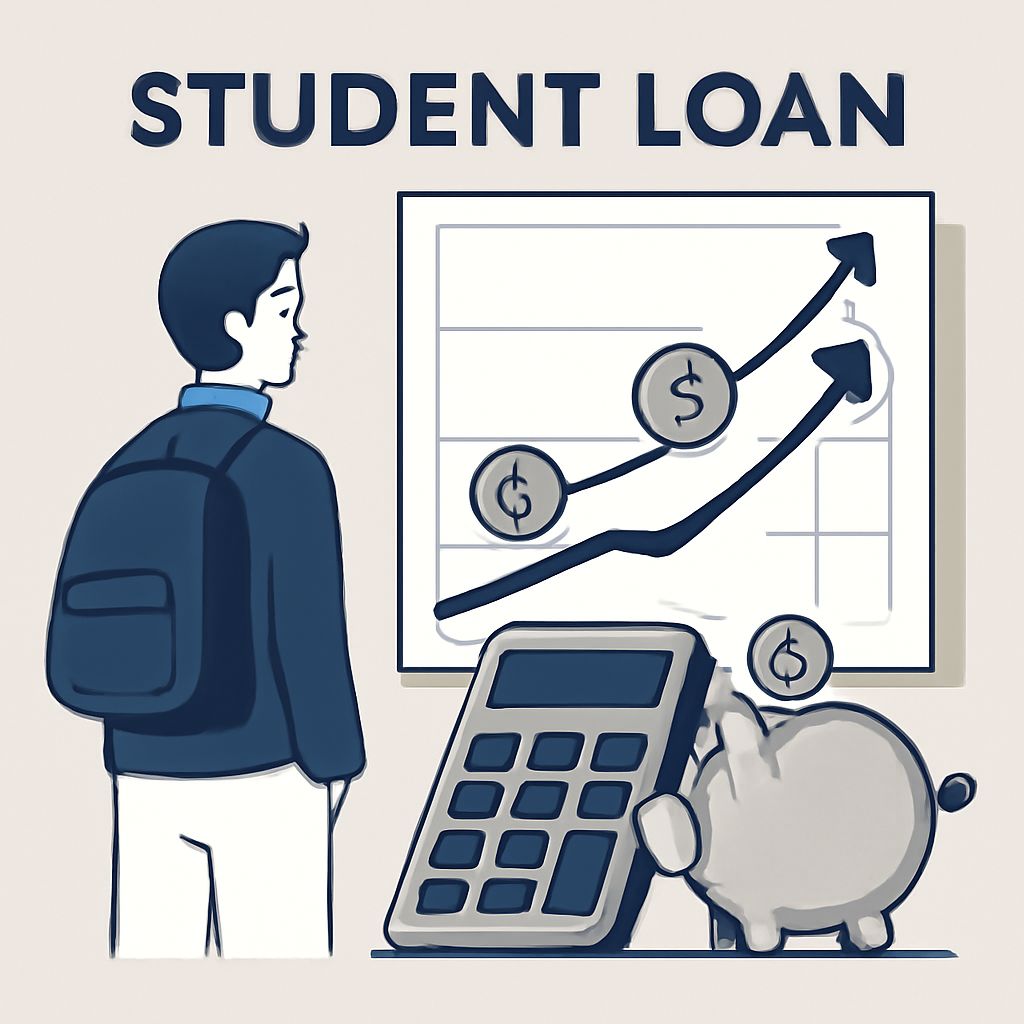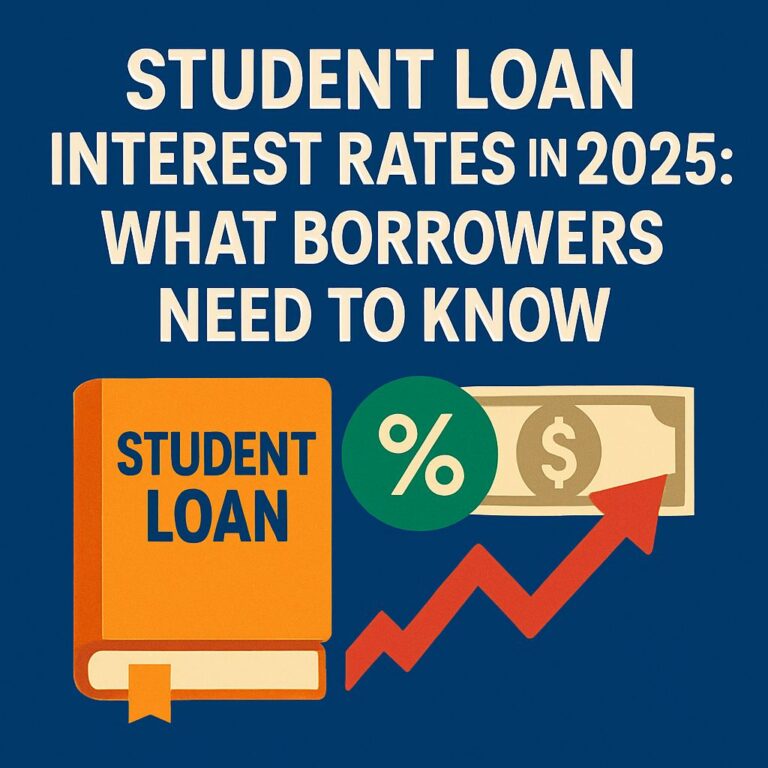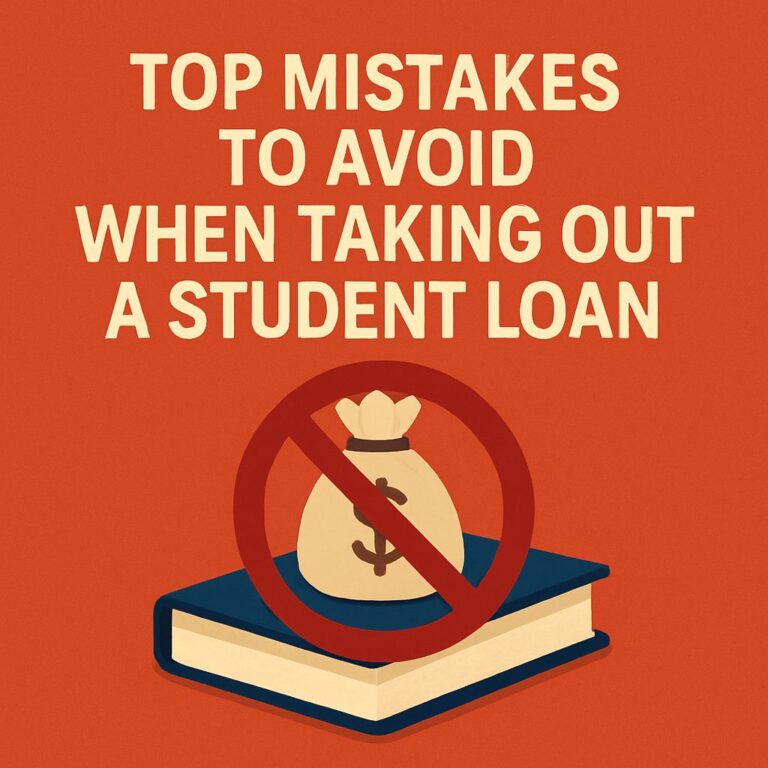How Interest Works on Student Loans (And How to Beat It)
When it comes to student loans, most people focus on the number that matters right now — the monthly payment. But what often gets overlooked is the quiet culprit behind the ballooning balance: interest.
Interest is the hidden engine that makes your debt grow slowly — or sometimes rapidly — over time. Understanding how it works isn’t just “nice to know,” it’s essential to avoiding a lifetime of debt and financial stress.
If you’re a student or recent grad trying to wrap your head around student loans, this post is for you. We’ll break down how interest works, how it affects your long-term finances, and — most importantly — how to fight back.
Let’s dive in.
What Is Interest, Really?
At its core, interest is the price you pay to borrow money. When you take out a student loan, the lender (whether it’s the government or a private company) is basically renting money to you. And like any rental, there’s a cost involved.
Interest is expressed as a percentage of your loan balance, and it’s calculated over time — daily, in fact.
That means the longer you take to repay your loan, the more interest you pay.
The Two Types of Interest: Fixed vs. Variable
When you borrowed your student loan, you were likely given one of two types of interest:
✅ Fixed Interest Rate:
-
Does not change over the life of the loan.
-
Common with federal student loans.
-
Easier to plan for since your payment stays predictable.
✅ Variable Interest Rate:
-
Fluctuates based on market conditions.
-
More common with private loans.
-
Can start lower than fixed, but may increase dramatically.
Most students with federal loans have fixed rates, while private loans might be either.
How Interest Accrues on Student Loans
Here’s where things get technical — but stick with me, because this part is critical.
Student loan interest typically accrues daily, not monthly. So every single day, your loan balance increases slightly due to interest.
The Basic Formula:
Let’s say you owe $30,000 at a 5% interest rate.
Your daily interest would be:
(30,000 × 0.05) ÷ 365 = $4.11 per day
That’s $4.11 every day your loan isn’t paid off. In a month? That’s about $123.30. If you only pay the minimum, most of your early payments go straight to covering this interest — not the principal balance.
Capitalization: The Interest Trap You Need to Avoid
Here’s where it gets even more dangerous: capitalization.
Capitalization is when unpaid interest gets added to your principal. That means you’ll now pay interest on a larger balance — which makes your debt grow even faster.
When does capitalization happen?
-
After a grace period
-
After a forbearance or deferment
-
When switching repayment plans (in some cases)
Let’s say you borrowed $20,000 and accumulated $2,000 in interest during a deferment. If that interest capitalizes, your new balance is $22,000 — and now you’re paying interest on that bigger amount.
Federal Student Loan Interest Rates for 2025
As of 2025, federal student loan interest rates are fixed and depend on the loan type and when it was disbursed.
Here’s a quick breakdown for new loans disbursed between July 1, 2025, and June 30, 2026 (based on projected trends):
| Loan Type | Interest Rate (Estimated) |
|---|---|
| Direct Subsidized (Undergrad) | 5.5% |
| Direct Unsubsidized (Undergrad) | 5.5% |
| Direct Unsubsidized (Graduate) | 7.05% |
| PLUS Loans | 8.05% |
Note: Subsidized loans don’t accrue interest while you’re in school at least half-time. Unsubsidized and PLUS loans do.
Private Student Loans: A Different Beast
Private student loans work differently. Interest rates can range from 4% to over 12%, depending on:
-
Your credit score (or your co-signer’s)
-
Loan term length
-
Whether the rate is fixed or variable
Private loans also don’t offer income-driven repayment or forgiveness. That makes it even more important to understand how your interest works — and how to minimize it.
How to Beat Student Loan Interest: 8 Proven Strategies
Now that we’ve covered how interest works, let’s talk about how to beat it.
1. Pay While You’re Still in School
Even small payments on interest while you’re in school can prevent thousands in capitalization later.
2. Make Payments During the Grace Period
Don’t wait until repayment officially starts. The more you chip away early, the less interest builds up.
3. Pay More Than the Minimum
If your required payment is $250, try to pay $300. Make sure the extra goes toward the principal, not just interest.
👉 Tip: Most servicers require you to specify this manually — don’t assume they’ll apply it correctly.
4. Make Biweekly Payments
Instead of one big payment monthly, split it into two smaller payments every two weeks. You’ll make one extra full payment per year and reduce interest.
5. Refinance at a Lower Rate
If you have a stable job and good credit, refinancing to a lower rate can save thousands. But be cautious — don’t refinance federal loans unless you’re 100% sure you won’t need forgiveness or income-based plans.
6. Target High-Interest Loans First
Use the avalanche method: pay the minimum on all loans, but throw any extra cash at the loan with the highest interest rate.
7. Enroll in Autopay
Most lenders (including federal) offer a 0.25% interest rate reduction for setting up autopay. It may not sound like much, but it adds up over years.
8. Avoid Deferment and Forbearance If Possible
Unless it’s a crisis, try to stay on your regular repayment plan. These “breaks” often just make the interest pile higher.
Real-World Example: How Interest Can Double Your Loan
Let’s say you borrow $35,000 at 6.5% interest over 20 years.
-
Monthly payment: ~$260
-
Total paid over 20 years: ~$62,400
-
Total interest paid: $27,400
Now imagine you pay $350/month instead of $260:
-
Loan is paid off in 13 years
-
Total paid: ~$54,600
-
Total interest: $19,600
You just saved nearly $8,000 — just by adding an extra $90/month.
Final Thoughts: Interest Isn’t Your Enemy — Apathy Is
Interest on student loans feels like a trap, and in many ways, it is. But it’s also a system you can learn to outsmart. The more you understand how interest accrues, when it capitalizes, and how to attack your balance early, the less power it has over your life.
Remember: beating student loan interest doesn’t require being rich. It requires being proactive, intentional, and a little bit strategic.
You don’t need to become a financial wizard overnight — you just need to start taking small steps today.
Helpful Tools & Resources:


